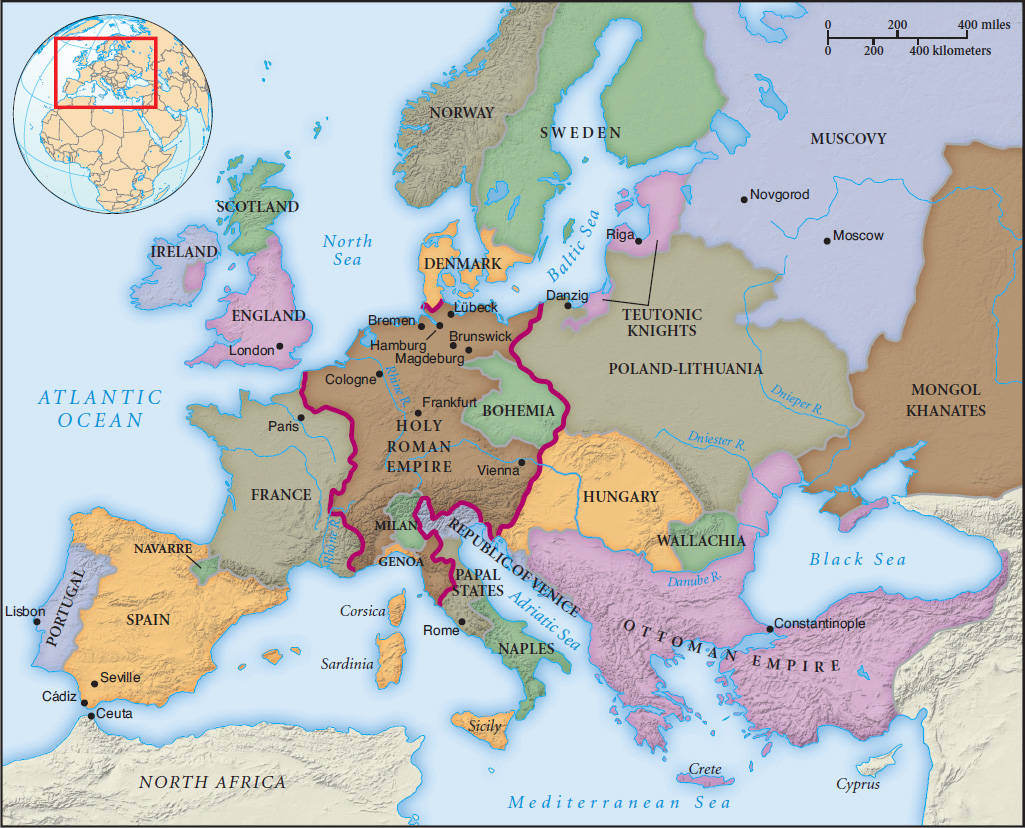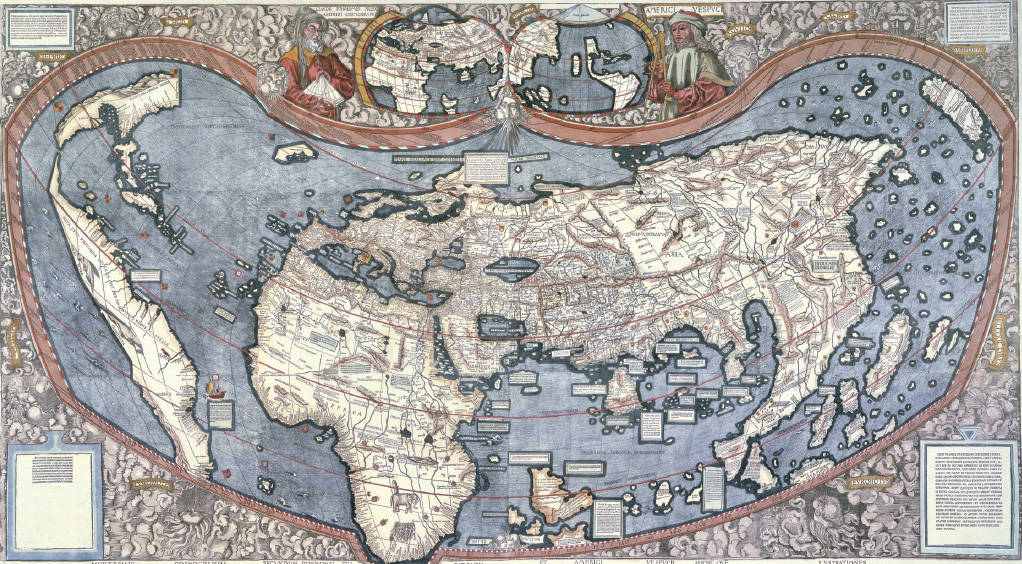European Comparisons: State Building and Cultural Renewal
Comparison
Question
What political and cultural differences stand out in the histories of fifteenth-century China and Western Europe? What similarities are apparent?
[Answer Question]
At the other end of the Eurasian continent, similar processes of demographic recovery, political consolidation, cultural flowering, and overseas expansion were under way. Western Europe, having escaped Mongol conquest but devastated by the plague, began to regrow its population during the second half of the fifteenth century. As in China, the infrastructure of civilization proved a durable foundation for demographic and economic revival.
Politically too Europe joined China in continuing earlier patterns of state building. In China, however, this meant a unitary and centralized government that encompassed almost the whole of its civilization, while in Europe a decidedly fragmented system of many separate, independent, and highly competitive states made for a sharply divided Christendom (see Map 12.2). Many of these states—Spain, Portugal, France, England, the city-states of Italy (Milan, Venice, and Florence), various German principalities—learned to tax their citizens more efficiently, to create more effective administrative structures, and to raise standing armies. A small Russian state centered on the city of Moscow also emerged in the fifteenth century as Mongol rule faded away. Much of this state building was driven by the needs of war, a frequent occurrence in such a fragmented and competitive political environment. England and France, for example, fought intermittently for more than a century in the Hundred Years’ War (1337–1453) over rival claims to territory in France. Nothing remotely similar disturbed the internal life of Ming dynasty China.

A renewed cultural blossoming, known in European history as the Renaissance, likewise paralleled the revival of all things Confucian in Ming dynasty China. In Europe, however, that blossoming celebrated and reclaimed a classical Greco-Roman tradition that earlier had been lost or obscured. Beginning in the vibrant commercial cities of Italy between roughly 1350 and 1500, the Renaissance reflected the belief of the wealthy male elite that they were living in a wholly new era, far removed from the confined religious world of feudal Europe. Educated citizens of these cities sought inspiration in the art and literature of ancient Greece and Rome; they were “returning to the sources,” as they put it. Their purpose was not so much to reconcile these works with the ideas of Christianity, as the twelfth- and thirteenth-century university scholars had done, but to use them as a cultural standard to imitate and then to surpass. The elite patronized great Renaissance artists such as Leonardo da Vinci, Michelangelo, and Raphael, whose paintings and sculptures were far more naturalistic, particularly in portraying the human body, than those of their medieval counterparts. Some of these artists looked to the Islamic world for standards of excellence, sophistication, and abundance. (See Visual Sources for the role of Islam in the European Renaissance.)
Although religious themes remained prominent, Renaissance artists now included portraits and busts of well-known contemporary figures, scenes from ancient mythology, and depictions of Islamic splendor. In the work of scholars, known as humanists, reflections on secular topics such as grammar, history, politics, poetry, rhetoric, and ethics complemented more religious matters. For example, Niccolò Machiavelli’s (1469–1527) famous work The Prince was a prescription for political success based on the way politics actually operated in a highly competitive Italy of rival city-states rather than on idealistic and religiously based principles. To the question of whether a prince should be feared or loved, Machiavelli replied:
One ought to be both feared and loved, but as it is difficult for the two to go together, it is much safer to be feared than loved. . . . For it may be said of men in general that they are ungrateful, voluble, dissemblers, anxious to avoid danger, and covetous of gain. . . . Fear is maintained by dread of punishment which never fails. . . . In the actions of men, and especially of princes, from which there is no appeal, the end justifies the means.5

While the great majority of Renaissance writers and artists were men, among the remarkable exceptions to that rule was Christine de Pizan (1363–1430), the daughter of a Venetian official, who lived mostly in Paris. Her writings pushed against the misogyny of so many European thinkers of the time. In her City of Ladies, she mobilized numerous women from history, Christian and pagan alike, to demonstrate that women too could be active members of society and deserved an education equal to that of men. Aiding in the construction of this allegorical city is Lady Reason who offers to assist Christine in dispelling her poor opinion of her own sex. “No matter which way I looked at it,” she wrote, “I could find no evidence from my own experience to bear out such a negative view of female nature and habits. Even so . . . I could scarcely find a moral work by any author which didn’t devote some chapter or paragraph to attacking the female sex.”7
Heavily influenced by classical models, Renaissance figures were more interested in capturing the unique qualities of particular individuals and in describing the world as it was than in portraying or exploring eternal religious truths. In its focus on the affairs of this world, Renaissance culture reflected the urban bustle and commercial preoccupations of Italian cities. Its secular elements challenged the otherworldliness of Christian culture, and its individualism signaled the dawning of a more capitalist economy of private entrepreneurs. A new Europe was in the making, one more different from its own recent past than Ming dynasty China was from its pre-Mongol glory.